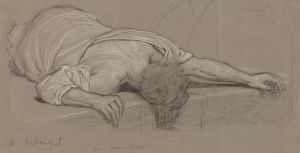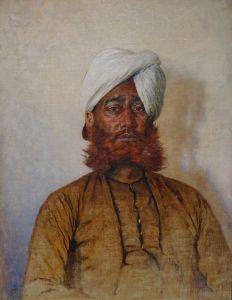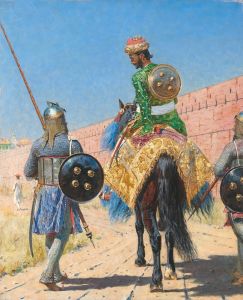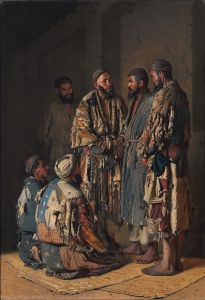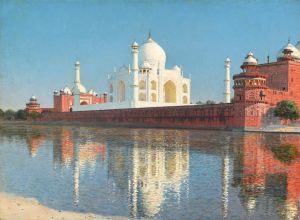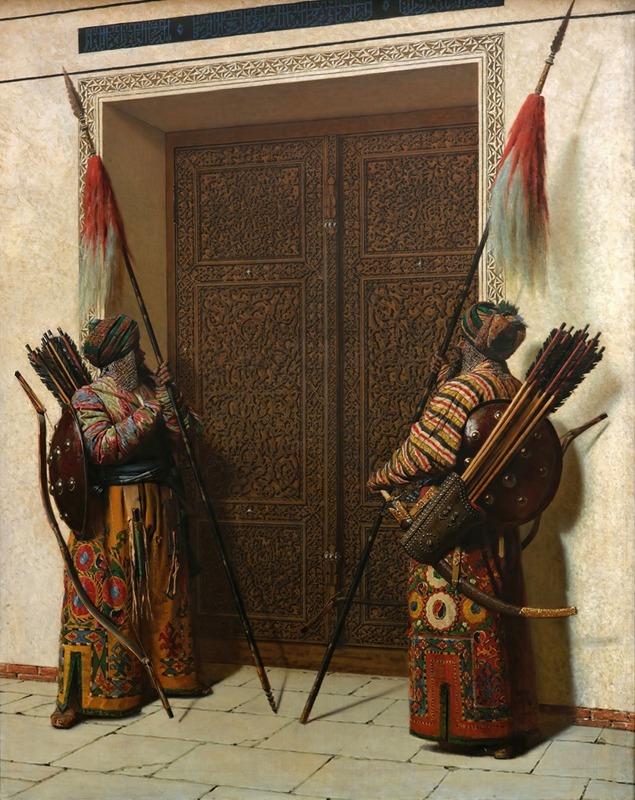
Timur’s doors
A hand-painted replica of Vasily Vereshchagin’s masterpiece Timur’s doors, meticulously crafted by professional artists to capture the true essence of the original. Each piece is created with museum-quality canvas and rare mineral pigments, carefully painted by experienced artists with delicate brushstrokes and rich, layered colors to perfectly recreate the texture of the original artwork. Unlike machine-printed reproductions, this hand-painted version brings the painting to life, infused with the artist’s emotions and skill in every stroke. Whether for personal collection or home decoration, it instantly elevates the artistic atmosphere of any space.
Vasily Vereshchagin was a renowned Russian war artist and traveler, known for his vivid and often controversial depictions of war and its aftermath. One of his notable works is "Timur’s Doors," which reflects his interest in historical themes and his travels in Central Asia.
"Timur’s Doors" is a painting that captures the grandeur and historical significance of the architectural heritage associated with Timur, also known as Tamerlane, the 14th-century Turco-Mongol conqueror who established a vast empire in Central Asia. Vereshchagin's work often focused on the cultural and historical aspects of the regions he visited, and this painting is no exception.
The painting is believed to depict one of the monumental doors of a significant architectural site from the Timurid era. Timur was known for his patronage of the arts and architecture, and his capital, Samarkand, became a center of Islamic culture and learning. The city was adorned with magnificent buildings, including mosques, madrasas, and mausoleums, many of which featured intricate tile work and grandiose doors.
Vereshchagin's depiction of "Timur’s Doors" likely emphasizes the intricate craftsmanship and the imposing nature of Timurid architecture. His attention to detail and ability to capture the essence of the historical and cultural context are evident in the painting. The doors themselves would have been symbolic of the power and influence of Timur's empire, serving as a gateway to the architectural and cultural achievements of the time.
Vasily Vereshchagin's travels to Central Asia in the late 19th century provided him with firsthand experience of the region's rich history and diverse cultures. His works from this period often reflect a deep appreciation for the architectural and artistic achievements of the past. "Timur’s Doors" is a testament to his ability to convey the historical significance and aesthetic beauty of the subjects he chose to depict.
While specific details about the painting "Timur’s Doors" are limited, it is consistent with Vereshchagin's broader body of work, which frequently explored themes of history, culture, and the impact of war. His paintings often served as a bridge between the East and the West, offering Western audiences a glimpse into the rich cultural heritage of regions like Central Asia.
Vereshchagin's art was not only a reflection of his personal experiences and observations but also a commentary on the broader historical and cultural narratives of his time. "Timur’s Doors," like many of his works, invites viewers to consider the legacy of historical figures like Timur and the enduring impact of their architectural and cultural contributions.





